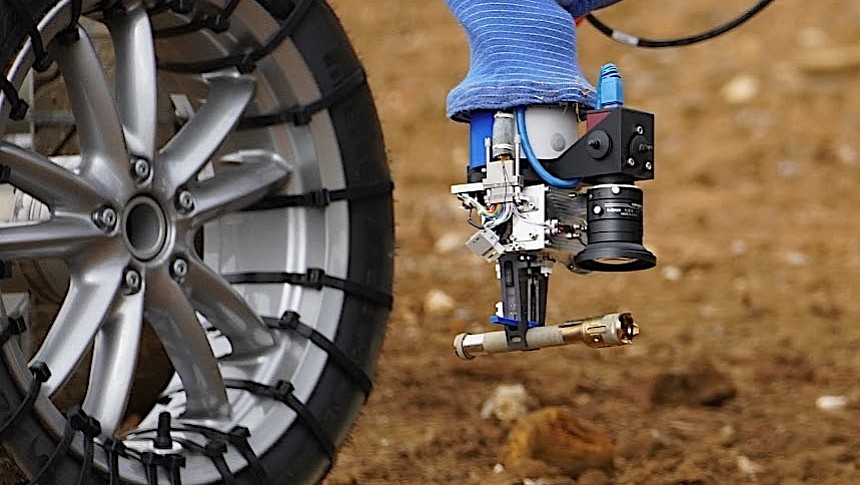We're still some years away from when the first component of the Mars Sample Return mission, the Earth Return Orbiter, will depart for Mars. An even longer time separates us from the moment a rover (or some helicopters, as the case may be) starts collecting the titanium tubes Perseverance is dropping all over its place of operation on the Red Planet. Yet humans here on Earth are already hard at work practicing for the mission.
The Mars Sample Return is one of the most ambitious ones ever devised for the exploration of another world. That is because it will be the first time we'll be bringing home, on purpose, pieces of an alien planet, and also the first time a human spacecraft will lift off from another planet to head back home.
The mission calls on the Perseverance rover already on site on Mars to collect samples of the planet's soil, store them in tubes, and then drop those at specific places around its area of operation. And it has already done a lot of the work.
Separately, here on Earth space agencies are preparing the Sample Retrieval Lander to gather all the tubes, the Mars Ascent Vehicle to transport them off Mars, and the Earth Return Orbiter to bring them back home.
Today's story is about the precursor of the Sample Retrieval Lander, currently being tested at the hands of the European Space Agency (ESA) and Airbus.
The first time we heard about the testing going on with this robot was back in May, when we learned of the Europeans practicing sample retrieving gear and procedures. This week we learned of an actual model of the rover performing navigation and sample collection all on its own.
More to the point, the robot had to navigate unknown terrain in search of the target sample tubes, find them and pick them up. While navigation and search have been tested before, it was the first time the rover actually had to pick up sample tubes using a robotic arm.
Using a camera installed on the mast, the rover was able to see the tube and estimate its position in relation to the rover itself and the arm. The arm then "initiated a complex choreography to move closer to the sample, fetch it and store it," which it apparently did without any issue. And more importantly, without human intervention.
ESA says the tests of the system lasted for two weeks, with the rover traveling a distance of 300 meters (984 feet) while dodging various obstacles.
Work on the rover is not nearly over, and the space agency confirmed testing will continue well into 2024. The rover may be assisted on its mission on Mars by a fleet of Ingenuity-like helicopters NASA is developing for the Mars Sample Return as a "secondary method of sample retrieval."
The mission calls on the Perseverance rover already on site on Mars to collect samples of the planet's soil, store them in tubes, and then drop those at specific places around its area of operation. And it has already done a lot of the work.
Separately, here on Earth space agencies are preparing the Sample Retrieval Lander to gather all the tubes, the Mars Ascent Vehicle to transport them off Mars, and the Earth Return Orbiter to bring them back home.
Today's story is about the precursor of the Sample Retrieval Lander, currently being tested at the hands of the European Space Agency (ESA) and Airbus.
The first time we heard about the testing going on with this robot was back in May, when we learned of the Europeans practicing sample retrieving gear and procedures. This week we learned of an actual model of the rover performing navigation and sample collection all on its own.
More to the point, the robot had to navigate unknown terrain in search of the target sample tubes, find them and pick them up. While navigation and search have been tested before, it was the first time the rover actually had to pick up sample tubes using a robotic arm.
Using a camera installed on the mast, the rover was able to see the tube and estimate its position in relation to the rover itself and the arm. The arm then "initiated a complex choreography to move closer to the sample, fetch it and store it," which it apparently did without any issue. And more importantly, without human intervention.
ESA says the tests of the system lasted for two weeks, with the rover traveling a distance of 300 meters (984 feet) while dodging various obstacles.
Work on the rover is not nearly over, and the space agency confirmed testing will continue well into 2024. The rover may be assisted on its mission on Mars by a fleet of Ingenuity-like helicopters NASA is developing for the Mars Sample Return as a "secondary method of sample retrieval."
























